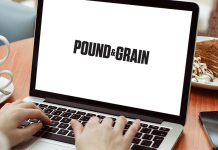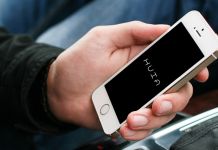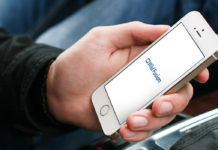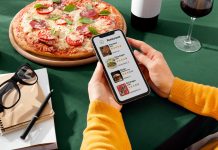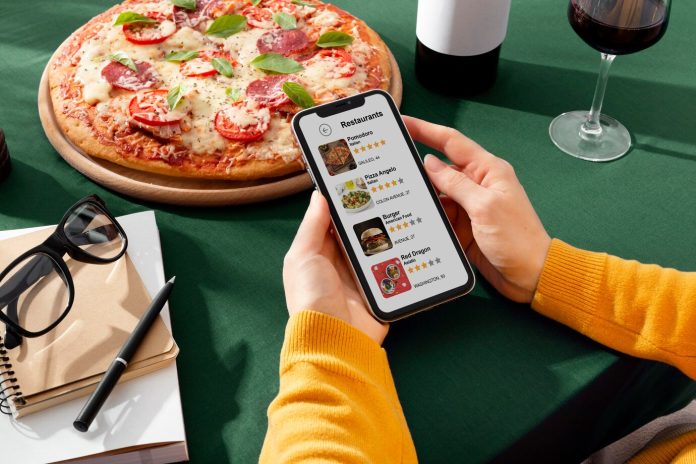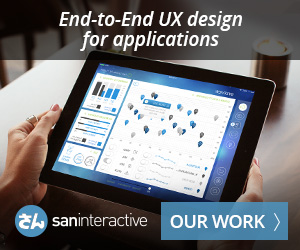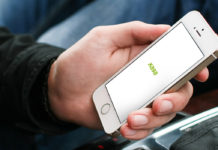Whether you’re ordering a pizza, discovering new recipes or making reservations at a fancy restaurant, food apps have revolutionized how we interact with food-related services. The success of food apps heavily relies on user experience, and so in this article we’ll explore best practices in UX design and how they’re being utilized in leading food apps to make them stand out functionally and aesthetically.
1. User-Centered Design
User-centered design means understanding your target audience, their preferences and pain points. To achieve that you’ll need to conduct user research, surveys and usability tests to gather valuable insights. You can use tools like Hotjar and UserTesting, or directly contact some of your users and ask them specific questions about their personal experience and while using your app. You can then move on to analyzing the data you’ve collected and creating user personas to guide your design decisions and tailor the app to meet their specific needs.
2. Intuitive Navigation and Search Feature
One of the fundamental principles of UX design for food apps is intuitive and seamless navigation. Users should be able to find what they’re looking for effortlessly. Take for example UberEats, which uses a clean and straightforward layout. The home screen showcases trending restaurants and cuisines, making it easy for users to explore options.
To ensure that your food app users are able to find what they need without confusion you need to use clear labels, recognizable icons and a logical menu structure.
It’s highly recommended to implement a user-friendly search feature for quick access to specific dishes or restaurants. An effective search functionality is vital especially for users with specific preferences or dietary restrictions. The Yelp app stands out with its advanced search filters, allowing users to refine their searches by cuisine, price range, ratings, and more.
3. Visual Appeal
In food apps, visuals matter. By using high-quality images, vibrant colors and enticing visuals of restaurants and ingredients, you can significantly enhance the user experience. Grubhub, for instance, uses mouth watering images to showcase dishes, creating a visually enticing experience that drives user engagement.
Use high-resolution images of dishes and food preparation. Include multiple images from different angles and lighting conditions to give users a realistic view. Add zoom-in capabilities for a closer look at the details.
4. Personalization
Personalized content keeps users engaged and coming back for more. By customizing suggestions to the user’s unique taste and allowing them to save their favorite items or customize their profiles, you will see how satisfaction levels rise along with a sense of trust and familiarity. Apps like Netflix and Spotify have set high standards for personalized content, and food apps quickly followed suit.
Postmates uses machine learning algorithms to recommend restaurants and dishes based on user preferences and order history.
5. Easy Ordering and Payment Process
For food delivery and reservation apps, the ordering and payment process has to be as smooth as possible. The app should have a one-click ordering option for returning customers, it should offer various payment methods, including digital wallets and credit cards, and the checkout process must be secure and transparent.
DoorDash is an excellent example of streamlining the ordering process. It offers saved addresses, easy payment options and real-time tracking, making it convenient for users to place orders.
6. Reviews and Ratings
Apps like OpenTable encourage users to leave reviews and ratings, creating a sense of community and helping others make informed choices.
Integrating a review and rating system for restaurants and dishes enables user-generated content which helps users make informed decisions.
Encourage users to leave reviews and reward them for their feedback and address negative reviews professionally to maintain trust.
Innovative Trends in Food Apps UX Design
App UX is constantly evolving, with new trends being introduced and helping to shape tomorrow’s app design. UX professionals should always keep an eye open for innovations and new directions in this field.
Here are some examples of innovative UX concepts which are pushing the boundaries of food app design.
- Augmented Reality (AR) Menu Preview: Some apps are incorporating AR to provide users with a visual preview of dishes before ordering. This concept is gaining popularity among high-end restaurants.
- Voice Ordering: Integrating voice recognition technology, similar to Amazon’s Alexa, allows users to place orders using voice commands, enhancing accessibility.
- Gamification for Loyalty Programs: Apps like Starbucks have gamified their loyalty programs, making it fun for users to earn rewards and discounts, fostering user retention.
- Food Waste Reduction Features: Some apps are focusing on sustainability by providing options to share portions of meals with others or donate to charity.
Summary
In the competitive world of food apps, exceptional user experience is a differentiator. By following these UX design best practices, you can create an app that not only attracts users but also retains them. UX design is an ongoing process and so it’s important to continuously gather user feedback to make improvements and follow fresh trends to keep up with the latest innovations in the field.











